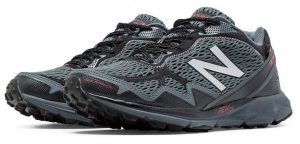After courting controversy with my previous article, I thought it appropriate to perform some experiments on myself, as is the tradition of all the finest Australian troublemakers!
Rather than continuing the debate of alleged ‘waterproofing’ and ‘ankle support’ concerns of hiking boots, I decided to focus purely on what I feel is the main issue of hiking boots: Weight on your feet.
The experiments I performed occurred over a period of 4 weeks during March and April this year.
The Experiment
I broke down the experiment into four different tests, and performed each hike at least twice on two separate occasions to confirm results.
All the hiking which involved pack carrying was performed with an 85 litre Aarn Earthglider hiking pack, with front balance pockets and included the use of two Leki hiking poles. (Total hiking pole weight 500 grams).
As a note on stability, I use hiking poles when wearing a heavy hiking pack and trail running shoes. I have always maintained good stability while wearing trail running shoes in conjunction with hiking poles. I have stumbled, but I have never fallen over when wearing trail running shoes while using hiking poles, even with high loads in slippery rock and rain conditions.
The first test was a control time (just me, no hiking pack), and the following tests included a hiking pack, hiking poles and a variety of foot weights ranging from 1 kg to 2.5 kg on each foot.
The differential of extra total weight (combined on feet and in pack) was then compared to the overall increase in time compared to the baseline control weight and time.
The foot weights used included two 500 gram + two 1 kg sand filled elastic ankle weights purchased from Kmart and 4 x 500 gram lead weights gaffer-taped to the left and right fore- foot of my trail shoes, for a variety of different weight combinations which were performed on each hike.
Each hike up Mt Lofty occurred in late afternoon, leaving the carpark at 5.30 pm. The hikes were performed over 4 weeks, up to three days per week (Sunday, Tuesday, Thursday) with at least 48 hours rest period between each hike.
The elevation gain from the carpark to summit of the Mt Lofty trail is approximately 500 metres over 4 km, with inclines ranging from 10% to 30%. The trail conditions were dry and dusty each time.
My body weight is 95 kg and my favourite trail running shoes weigh 350 grams each (New Balance 910 version 2 Non-Gore-Tex size US13 XX wide).
The Results – When Things Got Interesting
The Breakdown
As demonstrated, a small amount of extra weight on feet creates an exponential change in overall times, which again drop significantly if that weight is removed from the feet, and instead carried in the hiking pack.
Although I didn’t keep accurate times for all my descents, my average downhill was 45 minutes without feet weight, which increased to about 55 minutes when wearing foot weights on the downhill. My times were approximately 10 minutes slower even downhill when wearing the average 1 kg foot weights.
I noticed on one downhill while wearing 1 kg foot weights, I became so frustrated by the extra 1 kg on each foot that I removed the weights half way done. On this particular day, I had already been passed by at least 6 other walkers in 3 different groups, who were between 150 and 300 metres in front of me.
The amount of extra speed I was able to produce once the 1 kg on each foot was removed meant I over-took the 3 groups of walkers who had previously passed me, even though I was still carrying a 25 kg hiking pack with the 2 kg of extra weight stowed in the pack.
This left the clearest impression in my mind about how much slower and cumbersome extra weight on my feet made me, even down-hill.
On another occasion while summiting with an extra 1.5 kg weight on each foot, one of the 1.5 kg weights fell off my right foot. As I continued to walk for a few more steps, I suddenly noticed my un-weighted foot was rising about 20-30 cm higher off the ground compared to my left foot.
My right leg was still compensating for the extra weight expected. It was a bizarre feeling, with one leg involuntarily rising much higher than the other for several steps. This indicated to me how much extra effort my feet were expecting to require when walking with only an extra 1.5 kg on each foot, despite my total weight being 123 kg, which was a difference of 80 times more than the extra weight on my feet.
What Does It All Mean?
In summary, there were two major components of this set of experiments – qualitative and quantitative.
The qualitative side was; how does extra weight actually feel, and how does it affect comfort and walking? The experiential side of these tests showed how much more cumbersome and trudging my gait was, even with relatively small increases of weight on my feet. The experience of a weight falling off, and my gait showing an uncontrollable imbalance was particularly disconcerting. The feeling of lightest and spring in my step after removing only 1 kg from each foot and catching up with other walkers hundreds of metres in front of me, who had previously overtaken me was another enlightening experience.
The second, and probably most telling part of the experiment was quantitative – how much extra time it took to cover the same distance and elevation with weights on my feet.
The vast difference in times, compared to the relatively small overall changes in feet weight demonstrated an exponential increase in effort required to reach the summit, compared when the same weight was carried in the pack.
The key outcome was predicted in my previous article, with the increase in effort required to cover the same distance increasing by 10% with every extra kilogram on the feet.
The increase in time between test 3 and 4 showed this the most clearly – with an extra foot weight of 1.5 kg on each foot taking 16.5% longer than in the same conditions where the extra weight was instead carried inside my hiking pack. This almost perfectly matches the predictions.
Compared to test number 2, with no foot weights, the extra 1.5 kg on feet showed it took 25% longer to summit than test 2!
The Gauntlet
I would encourage anyone who may doubt how much extra effort hiking with extra weight on their feet is to duplicate this experiment, either with foot weights, or heavy hiking boots. Simply weigh the boots first, then compare the difference in weight to the lighter shoes you would normally use.
The difference in your time should clearly match the increase in effort required, where an extra 500 grams on each foot will predictably increase your times by 5%, and an extra 1000 grams on each foot will further slow your times by at least an extra 10%.
It would be interesting for someone to volunteer to repeat the above experiment while wearing hiking boots, to see if the restriction of movement in hiking boots further compounds the increase in effort and time on top the extra effort required due to the extra weight.


Hi Ben,
Firstly, I do commend your field work! You twice mention ‘exponential’ increases in time with increasing weight on your feet but in fact. the responses are approximately linear and that applies whether the relationships are between actual or percentage changes for both weights and time. You show this yourself in the penultimate paragraph of your article. Otherwise, I thought you were overstating you case for running shoes! You certainly were in your earlier article where you stated how the 5:1 foot:back ratio made walking ‘five times more efficient’ and left you ‘five times better off’ but those statements of course are not true.
In terms of the times taken and methodology, I wonder if strapping weights on your ankle or toe of boot really equates to wearing a heavier boot. I have never come across a case of anyone taking off their boots on a descent (or ascent for that matter) because they were too heavy! Not that I doubt your overall conclusions about footwear weight but I still think that people want to stop for rests during walks because of the weight of their pack rather than the weight of their footwear.
I think that I will put my own boots vs shoes to the test on Black Hill and let readers know the results.
cheers, Mike